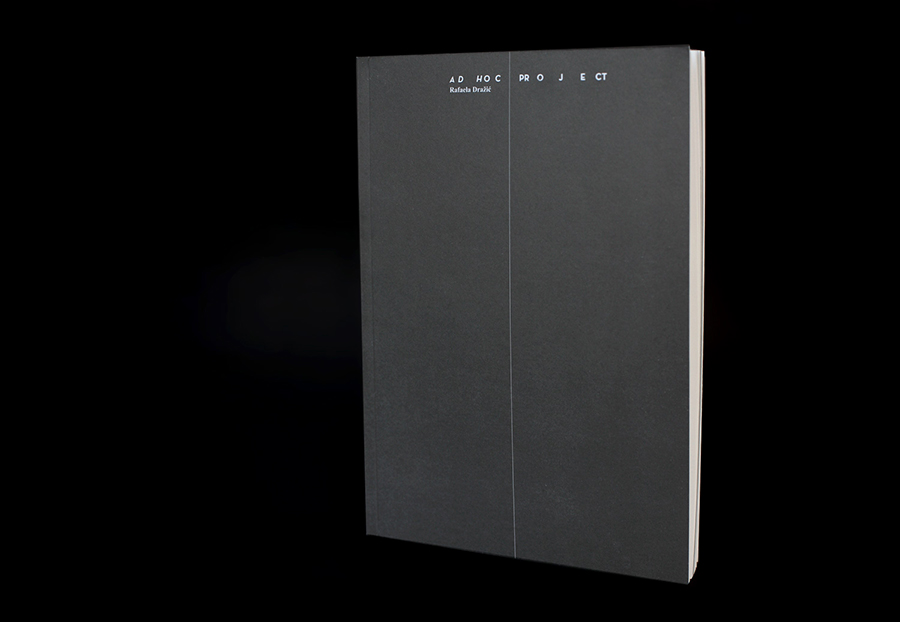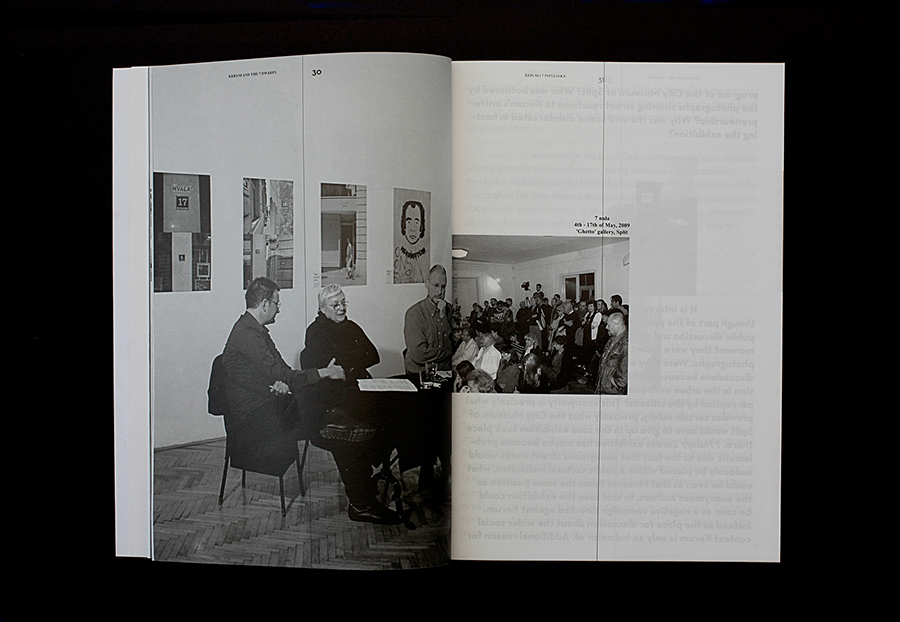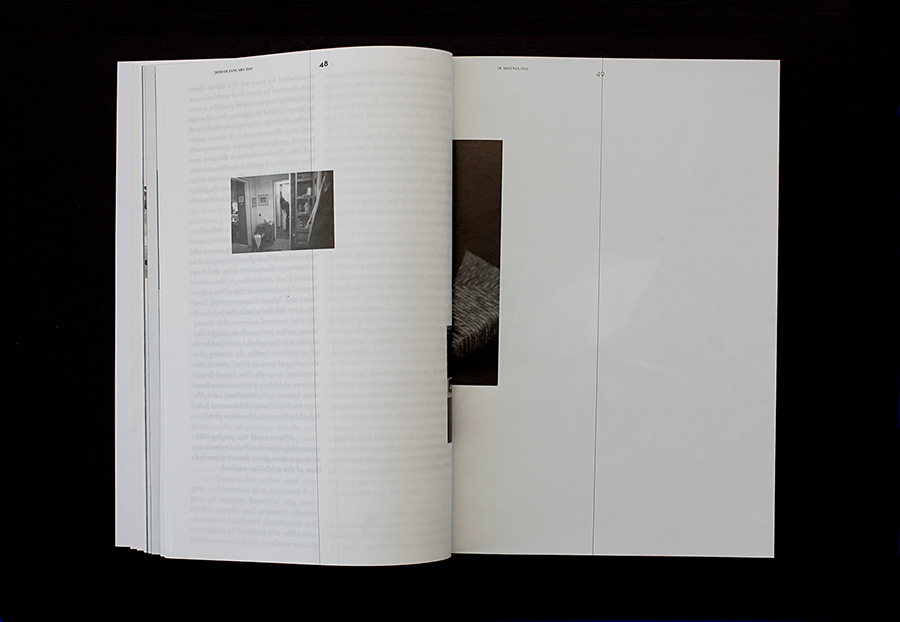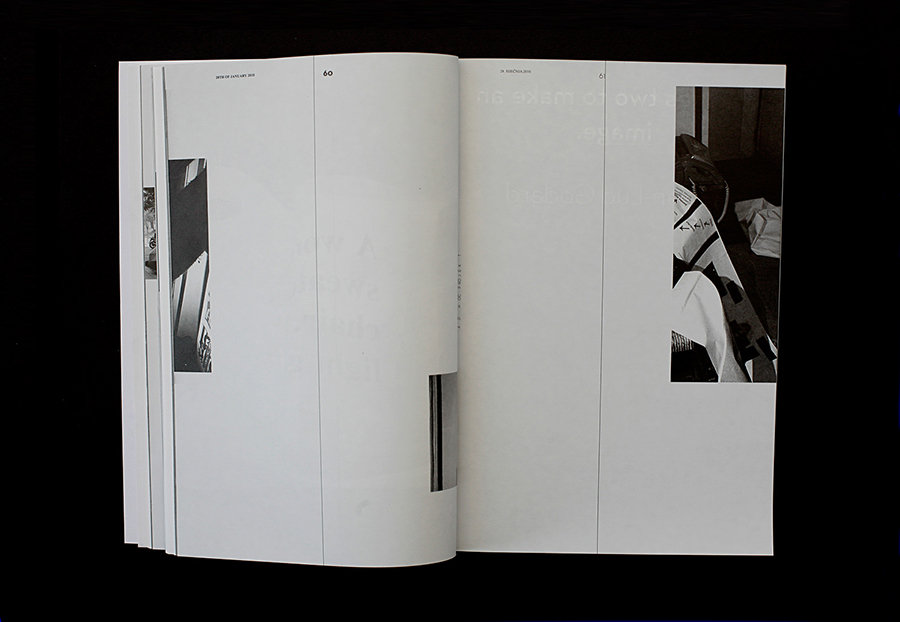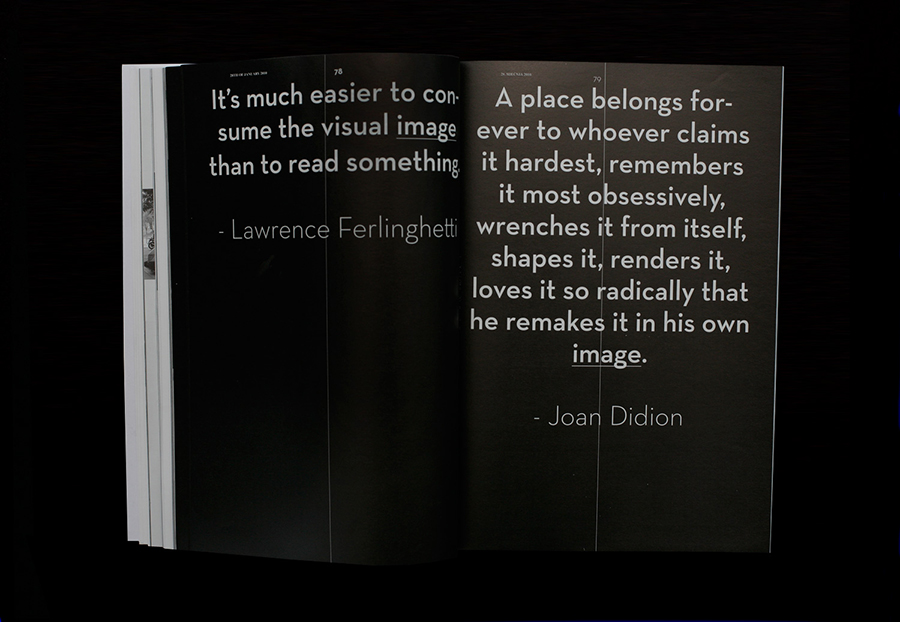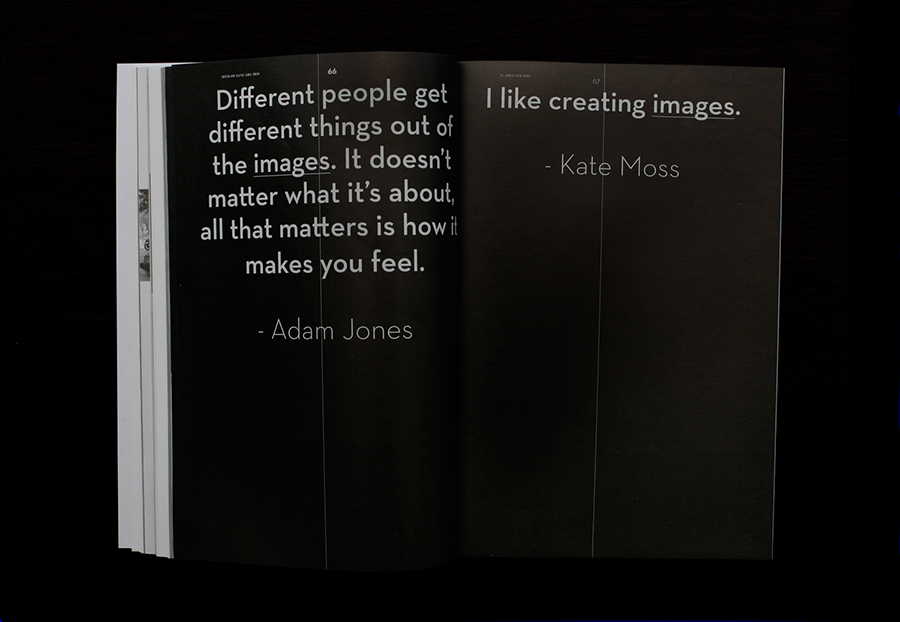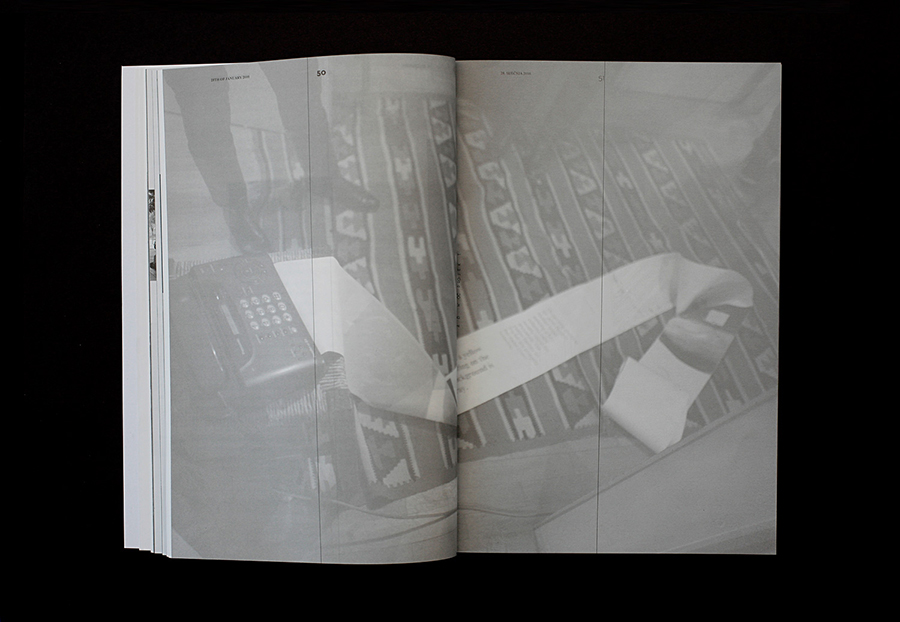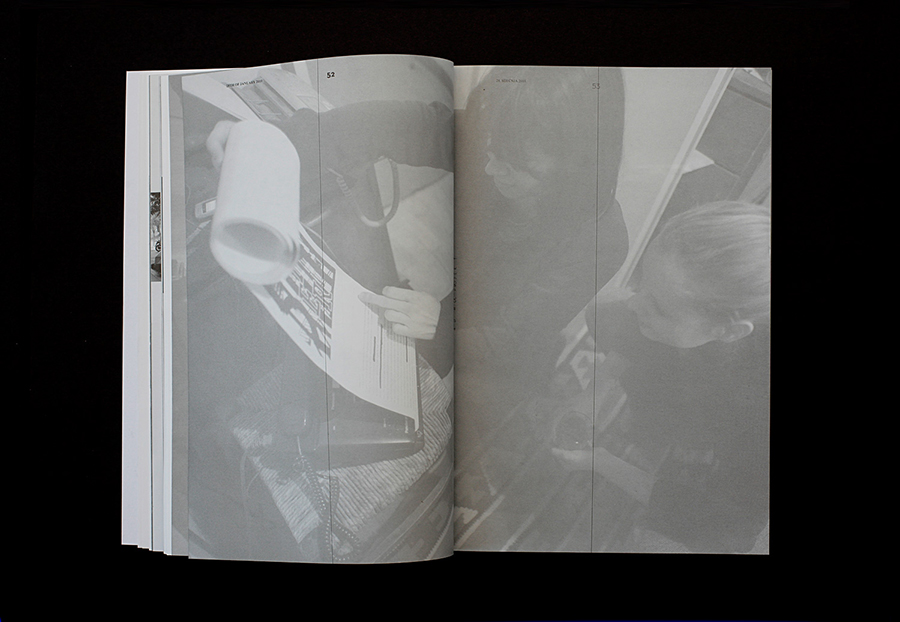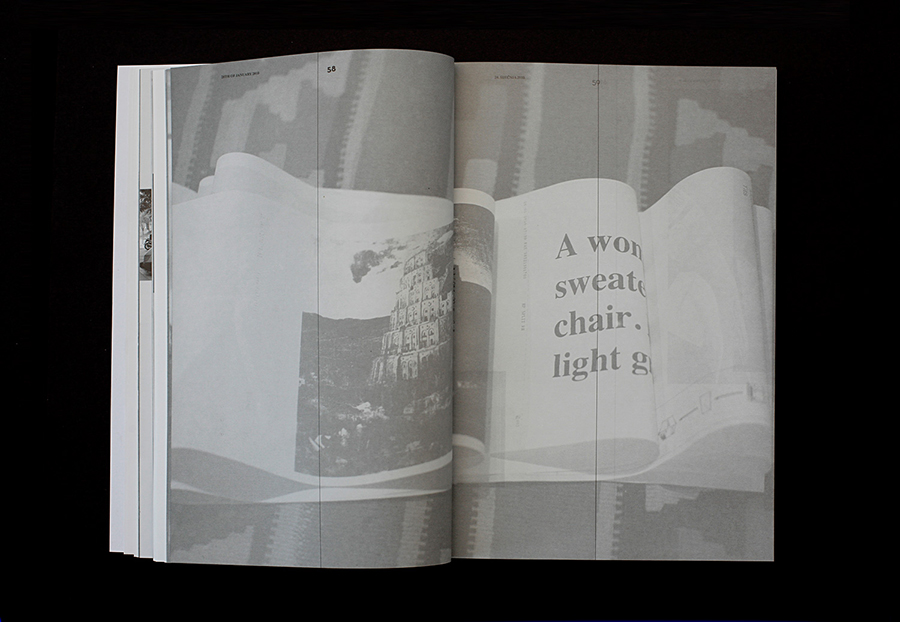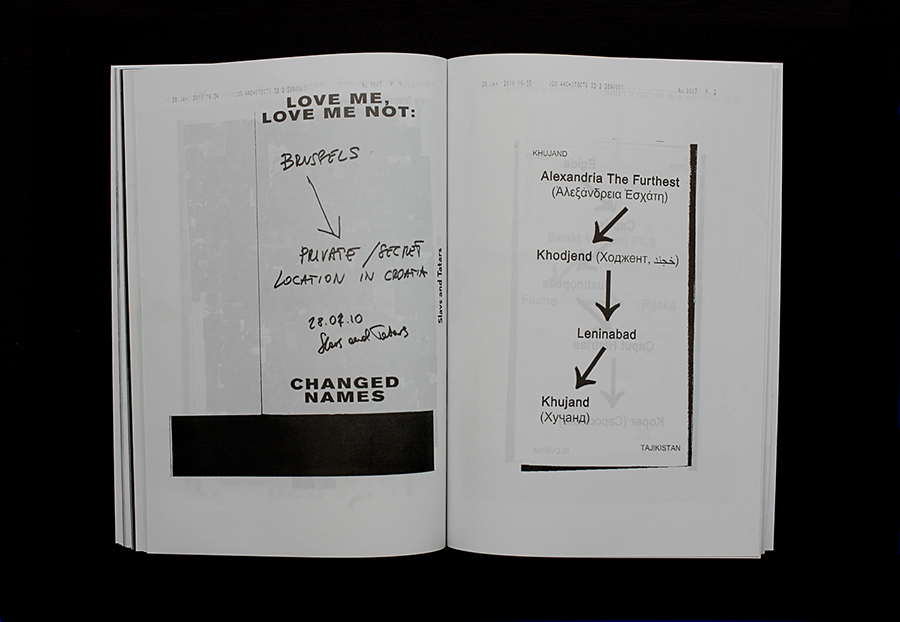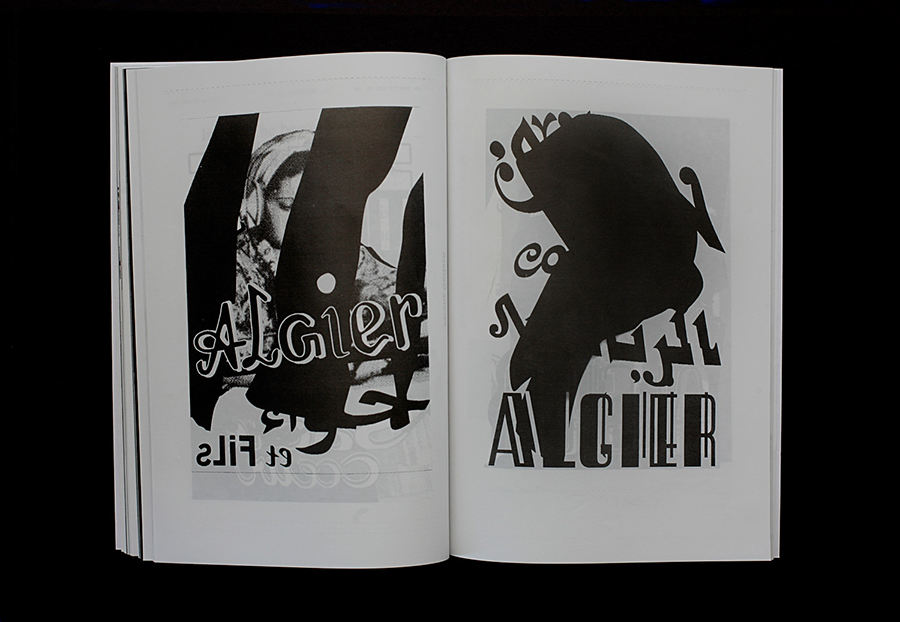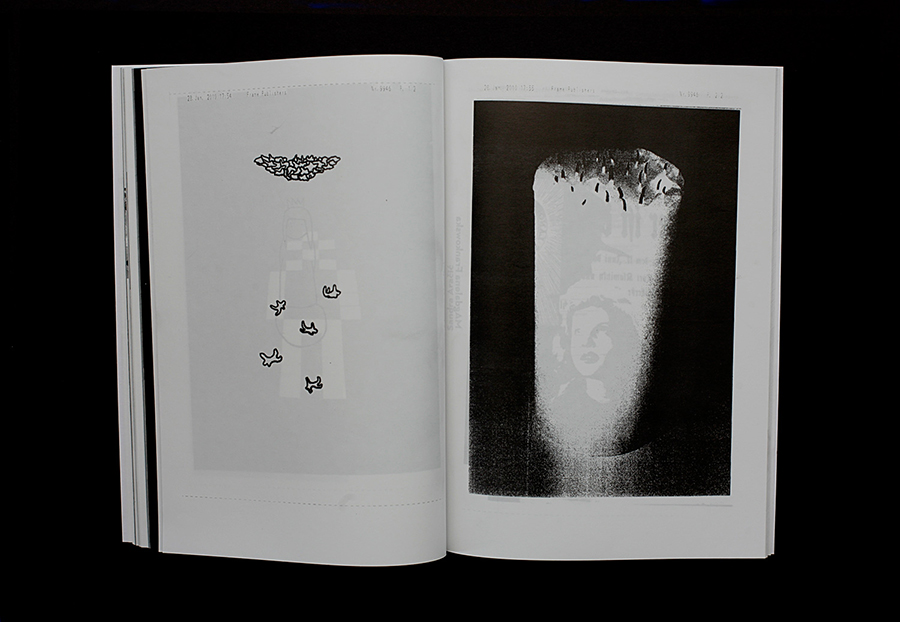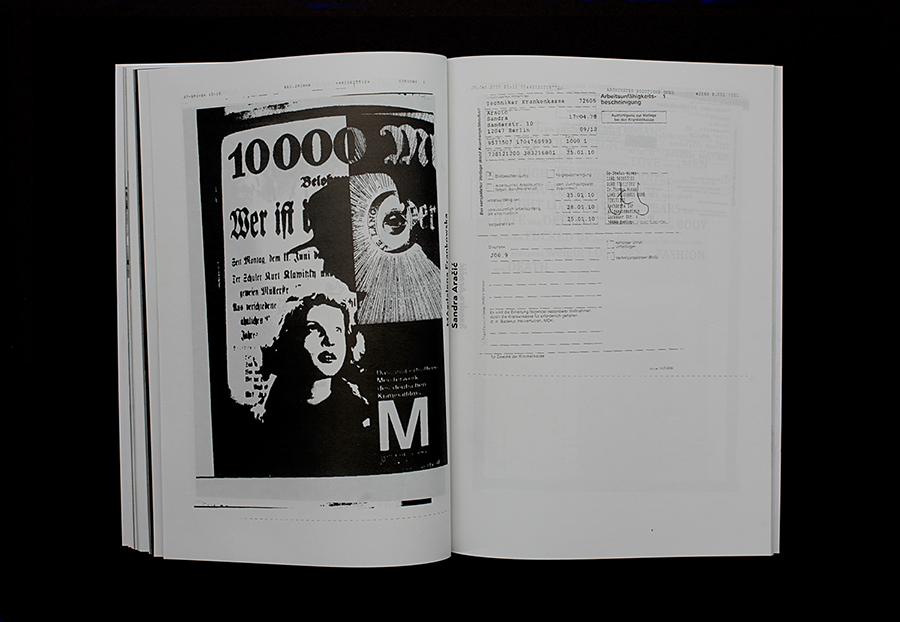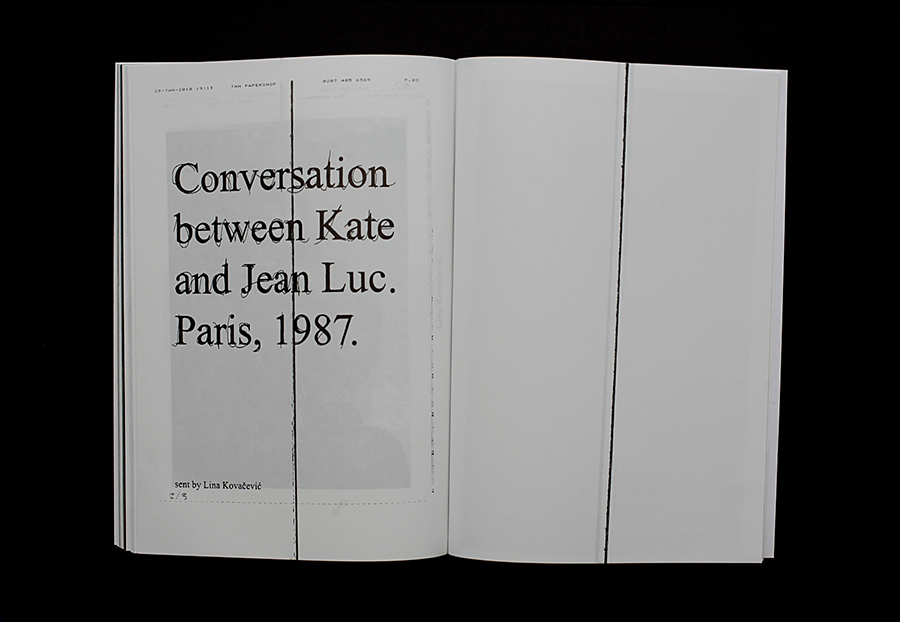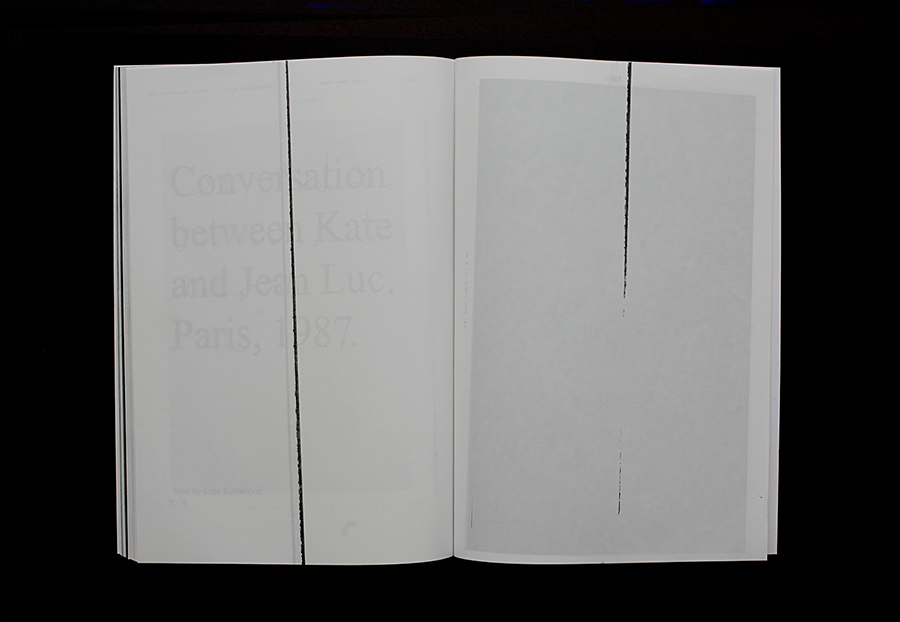Rafaela Drazic: Ad Hoc Project
(January 2010)

Secret Exhibition with fax machine (28th January 2010, 5.00 – 9.00 PM).
More images here.
With contributions by:
SLAVS AND TATARS, VERENA GERLACH, SANDY. K. KALTENBORN & PIERRE MAITE, SLANG INTERNATIONAL, MARCO UGOLINI, TOMOKO YONEDA, MAGDALENA FRANKOWSKA, LINA KOVACEVIC, ROBERT CANAK, STEFAN HAUS, KIM SCHWENK...
Format: 15.5 x 22 cm
Pages: 140
Colour: b/w
Binding: softcover
Print run: 150
Language: English, Croatian
ISBN: none
_
PREFACE
Secret Exhibitions project sheds a light on the complicated mechanisms of censorship and destruction within the context of visual arts, which were developed as a part of the processes of post-socialist transformations. The project functions as an interdisciplinary platform of curators, artists, historians and art historians who dealt with the topic of censorship or faced it directly. Project has an emphasized arbitrary nature.
AD HOC PROJECT – 28th January 2010
Invitation to hold a secret exhibition in one of the private apartments in Zagreb was sent to artists who faced direct censorship. They were invited to present their works and projects in a non-institutional context, precisely the works that were cancelled without explanation or due to “changes in concept”.
Rafaela Drazic, one of the authors, agreed to collaboration in the project of limited conditions by imposing her own obstructions on the existing ones, testing through a sort of game the sensibility of all participants of the project. She refused to present the censored exhibition 7 Nula/7 Zeroes in a private apartment, because she thought that repeated censorship of an already censored exhibition, and also separation from the context of Split (that was close to the topic of the exhibition, as a reason for its censorship) does not make too much sense.
Therefore, she decided to re-enact the situation she experienced as the initiator of the Split exhibition, and that is the situation where she lost control over her own exhibition. The difference is that this time that loss of control, as the reverse of censorship, was not the result of repression, unplanned by the curator, but it was programmatically chosen, as a precondition for the exhibition.
She put the curators of “Secret Exhibitions” into the same position, where they did not know who will participate in the ad hoc project or with what works. The role of the curator, as the one who chooses artists, selects works, and censors if the need arises, in this situation was made impossible in advance.
Private space of an apartment as a place for an exhibition has its limitations, especially considering the number of visitors invited internally – via email or text messages. Rafaela Drazic, determined in her decision to inform about and include more people in the exhibition, created an action in which about twenty artists, designers and art groups participated, but they were not physically present.
The concept she came up with was actually a designer one: she gave a topic and a way of its presentation (via fax). In that way she placed herself in the position of a client, in the same way providing the collaborators with the maximum freedom of expression within the given framework. Via email she sent artists and designers letter of participation in the project, offering them the notions of censorship and image as the key terms, i.e. as parameters for which they needed to find a solution.
To the invitation letter, a sort of brief, Drazic added various quotes on the image taken from the world of politics, fashion, film and visual arts. Along with that, she also set the restriction through the medium requiring from the participants to send their works only via fax machine, counting on the fact that the part of information will automatically get lost through that medium primarily meant for sending documents and texts.
The role of the main censor embodied in the machine was in that way left to chance – images coming out of the fax machine are of a bad quality and in some places barely recognizable, while the paper that receives information is photo-sensitive, which means that over time the works will fade.
The passage of time finishes the process of censorship, inevitably condemning all the works to disappearance, deleting them from some possible future history in advance. The uncertainty and impossibility of control marked the whole ad hoc project: will the artists and designers invited to participation reply to it at all (considering they all had to send their works at the same time, although many of them live in different time zones), will the fax machine borrowed for the occasion function properly, will there be enough paper, will international calls be established without problems, will the visitor respond to the invitation sent by email in a form of a mysterious invitation, which gave out minimum of information (name of the exhibition, address and time), and the like.
By moving away from the “controversial” photographs never shown in the City Museum of Split, in the ad hoc project Rafaela Drazic created a specific situation from which various aspects of censorship can be interpreted: ethics of curator and artist interrelationship, the issue of ordering a work set down by strict parameters, semi-closed character of the exhibition as a noise in communication with the wider audience, etc.
More than 20 designers, artist and art groups answered to Rafaela’s invitation, and during the whole time of the secret exhibition, which took place from 5.30 to 8.30 pm, graphics were coming through the fax machine.
– curators: Ivana Hanacek, Ana Krsinic Lozica, Irena Boric
Photos: René Zieger
_
Available online:
www.arcademi.com
And in selected bookstores:
Motto, Skalitzer Straße 68, Berlin, www.mottodistribution.com
pro qm, Almstadtstr. 48-50, Berlin, www.pro-qm.de
Do you read me?!, Auguststraße 28, Berlin, www.doyoureadme.de
Muzeum pro qm, Panska 3, Warszawa, www.muzeumproqm.pl
Bec Zmiana, Mokotowska 65, Warszawa, www.funbec.eu
OMMU, Emmanouil Benaki 79, Athens, www.ommu.info
Ooga Booga, 943 N. Broadway #203, LA, www.oogaboogastore.com
Family Bookstore, 436 n. Fairfax Ave, LA, www.familylosangeles.com
The Book Society, 331-8, Sangsu-dong, Seoul, www.thebooksociety.org
Distribution North America:
Textfield, Inc., www.textfield.org
